Sexuality Educators Writing for the Youngest of Readers: A Q&A with Dorian Solot and Marshall Miller on All About Penises, Vulvas, and Vaginas
Well, y’know. Gotta keep you on your toes.
The title of today’s post (which is bound to get me loads of unwanted spam in 3…. 2…. 1…) isn’t there to shock or get you in trouble at work. It’s just that sexuality educators Dorian Solot and Marshall Miller have two new books out next month about our bodies for kids. The pair are nationally recognized sex educators who have presented over 1,000 programs on sexuality topics at universities, businesses, high schools, national conferences, churches, and adult education centers over the past 20 years. Their new books for younger children, ALL ABOUT PENISES: A LEARNING ABOUT BODIES BOOK and ALL ABOUT VULVAS AND VAGINAS: A LEARNING ABOUT BODIES BOOK, are due out on shelves April 30th and give parents tools to simply teach their kids facts about bodies, reassure them that they’re normal, and embrace body diversity—all in a shame-free, kid-friendly way. These books are also dropping into a culture where books are banned for far less than these books’ titles. You can understand, then, why I felt that it was necessary to talk to these authors today about the necessity of what they’re writing:
Betsy Bird: Dorian and Marshall, thank you so much for joining me! You know, I was talking the other day to Alex Willan about his book UNICORNS ARE THE WORST, which got challenged in a Florida school district because it showed a naked goblin butt. The Moms for Liberty woman who brought the challenge cited a Florida law that prohibits showing minors any “nudity or sexual conduct.” Into this world in which a fictional creature’s butt can get challenged, you are introducing straightforward information about real human bodies and how they work. Tell us a little bit about why you’re introducing these books with these topics now.
ADVERTISEMENT
ADVERTISEMENT
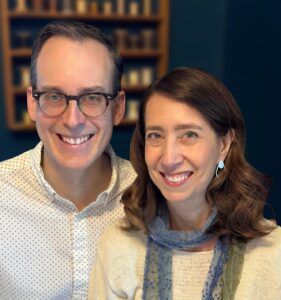
photo by Wild Moon
Dorian Solot: I wish there were some grand political response to the “why now?” question, but the honest answer is that a few years ago my sister called me about her son, my then four year old nephew, and said, “He has so many questions about his penis. What’s the best book to get him, like a book for four year olds that’s all about penises?” I thought for a moment and told her there was no book like that. She literally didn’t believe me. So I asked her, if there were a book like that, what would be in it? I took notes as she talked, hung up the phone, and wrote the first draft.
Marshall Miller: Since we started working on the books, we’ve found that a ton of parents and educators (and thankfully, the very wise Kate Farrell at Henry Holt) have the same reaction: of course there needs to be a book about this! Books are such perfect tools for educating about sensitive topics in matter-of-fact ways. These body parts are as important as any other–and arguably way more interesting.
Also, I promise you there are no goblin butts in our books. Not even one.
BB: Touché. Your books are coming out in 2024, the very year that our previous doyenne of sex education, Robie H. Harris, passed away. Robie’s books, like IT’S NOT THE STORK and IT’S PERFECTLY NORMAL, set the tone for a lot of books to come, but they were written a long time ago and times change. One thing that struck me particularly about your own books is how careful you are not to say “girls have vaginas” or “boys have penises” but rather that “people” have them. Can you talk a little bit about the ways in which you chose the specific language that would be used in these books?
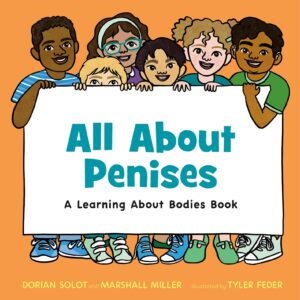
Dorian: We are huge fans of Robie’s books, and were so sad to learn that she had passed. Our own kids have her books on their bedroom shelves! She had such a knack for explaining factual information in kid-friendly ways. But you’re right: times have changed. Even though I still recommend her books to my friends, these days I have to add caveats, like, “They were written in a different era.” The body parts themselves haven’t changed, but some of the ways people talk and think about bodies and gender have evolved.
Marshall: One thing we’ve learned as educators is to be clear: if we’re talking about bodies, use body part words. And if we’re talking about gender, use gender words. So yes, these books are more inclusive than books written a generation ago, but I think and hope they’ve retained that sense of down-to-earth kid-friendliness. Our goal was to create books that are inclusive and relevant to transgender, non-binary, and intersex kids and parents, and just as readable and relevant to families for whom those topics aren’t on their radar screen.
BB: I mentioned the Robie H. Harris books, but it’s worth noting that her educational titles were also generally for older kids. What sets your books apart is that their intended age range is more along the 3-7 age range. Now you’ve been presenting to universities, businesses, high schools, national conferences, churches, and adult education centers on sex education over the past 20 years. Was writing for this young an age range a gear shift for you or did it come naturally after all your previous experience in the field?
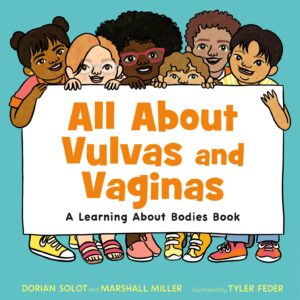
Dorian: As for so many authors, the shift was the result of becoming parents ourselves! While most of our work these days is still with college students, once you become a parent you’re immersed in a world of other parents trying to navigate sexuality-related issues related to young kids (as well as other critical parenting issues, like figuring how how to convince your child that macaroni and cheese is still macaroni and cheese whether it’s white or orange).
We were also hired to update the kindergarten and first grade edition of Our Whole Lives (OWL), a national sexuality education curriculum. It introduces topics like body parts, consent, and sexual abuse prevention. It’s actually taught mostly in churches! Before we started those revisions, we reached out to the hundreds of OWL teachers who had been presenting that curriculum to groups of kids over the last twenty years. Their insights about what kids wonder about and how they think were so valuable!
BB: When writing for kids of this age, what were the main points you wanted to nail down? And how do you walk the line between what’s important and educational to learn, and what you need to hold off on mentioning until the kids are a bit older?
Marshall: The most important thing was keeping the books developmentally appropriate. We knew kids should learn the correct names for the parts they can see, and some simple information about what those parts do. We wanted to be sure to communicate that however their body looks is fine and just right for them.
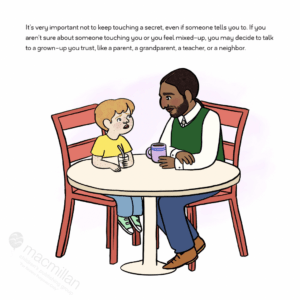
And it was also important that the books do some education about preventing sexual abuse. You’d be amazed how much time we spent on phone calls and Zooms with experts on this subject, revising and revising to reflect trauma-informed best practice. Interestingly, experts on that subject say that one of the most important things we can all do to help prevent sexual abuse is to be sure kids know the correct names for their genitals!
Dorian: These books are about external anatomy, the parts a kid can see themselves when they’re in the bathtub. So whenever one of us would say, “Wait, should we include the ovaries?” if it didn’t pass the “can they see it in when they’re in the bathtub?” test, it didn’t go in. Therefore, no ovaries, no fallopian tubes, no vas deferens. They can learn about those parts later. And there’s also no information about partnered sex or teen/adult sexuality, the kinds of topics grownups often think about when they hear the words “sex education.”
BB: Your illustrator Tyler Feder has been praised widely in the past for her inclusive books like BODIES ARE COOL so it makes a lot of sense to see her paired with you on these books. What were some of your takeaways after seeing her work? Had you been familiar with her work before?
Dorian: We love Tyler’s work and had included her name in our book proposal as the illustrator we thought would be perfect for these books. We were delighted when our publisher agreed to ask her, and even more thrilled when she said yes to the project! We were concerned that another illustrator might draw the cutest teddy bears and ladybugs in the world, but might not have Tyler’s intuitive sense of how to draw kids and adults’ bodies with a style that’s both warm and realistic, accurate without looking like a dry textbook illustration. We think she nailed it!
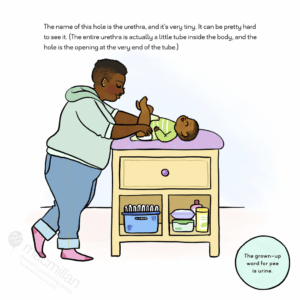
Tyler is so gifted at bringing her illustrations to life with endearing little details, like an octopus lamp on the bedside table, a kid with a bandaid, a dad with hairy legs, pink socks, and a belly. My very favorite Tyler touches are the pair of pages in each book where you can see the same kid as a little kid and then a bit older. The kitten becomes a cat, the girl who had a softball and glove when she was little now has a softball trophy on her shelf, the boy who loved magic tricks when he was little has a magician’s top hat nearby when he’s bigger. From the feedback we got when we asked our friends to read their kids the draft books, kids are as tickled by these details as we were!
BB: You’re not unaware of any of the book banning going on, obviously, considering the nature of your work. My question for you, then, is what can librarians, educators, and booksellers do to let parents know that books like ALL ABOUT PENISES and ALL ABOUT VULVAS AND VAGINAS are a necessary part of a child’s education?
Dorian: I think the best thing we can all do is normalize that learning about these parts of the body should happen right alongside the learning kids do about the five senses, about toes and heartbeats, about caterpillars and the solar system, in just the same factual way. Introducing these topics as ones that parents and kids read about together lays a foundation that makes it easier to continue the conversations as kids get older about how babies are made, puberty, and navigating teen dating and relationships. Start with the easy stuff!
ADVERTISEMENT
ADVERTISEMENT
Even though they look like kids’ books, these books are just as much parent and educator tools. A parent isn’t sure what to say to her five year old about his erections? (Yes, these are super common — and sometimes uncomfortable! — for young kids.) Someone’s kids have questions about why they look different than each other, or different from mom or dad? A single parent or a two-mom or two-dad family needs a comfortable way to talk about the “other” genitals? Pulling out a book gives parents the just-right words to introduce a topic, answer a question, start a conversation.
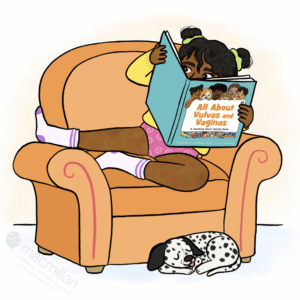
Marshall: So many people got the unspoken message growing up that their parents were deeply uncomfortable with questions about sex and bodies, and are committed to taking a different approach now that they’re a parent themselves. But that can be tough if you never had a good role model! Reading books like these when your kids are young shows them you’re un-afraid to say the words, and lets them know your door is open to continue to discuss related topics as they grow.
BB: Finally, do you have any interest in continuing to write books on these topics for kids and, if so, are you looking at other age ranges?
Dorian: There’s one more on its way in this series, Ingredients To Make a Baby (Holt Books for Young Readers, 2025). It’s our “how babies are made” book: inclusive and factual with a generous dose of silly.
And after that … we’ll see! We have so many ideas!
A great deal of thanks to both Dorian and Marshall for taking the time to answer my questions here today. You’ll be able to find both ALL ABOUT PENISES: A LEARNING ABOUT BODIES BOOK and ALL ABOUT VULVAS AND VAGINAS: A LEARNING ABOUT BODIES BOOK on shelves April 30th. Thanks too to Kelsey Marrujo and the folks at Macmillan for helping to set this interview up.
Filed under: Interviews
About Betsy Bird
Betsy Bird is currently the Collection Development Manager of the Evanston Public Library system and a former Materials Specialist for New York Public Library. She has served on Newbery, written for Horn Book, and has done other lovely little things that she'd love to tell you about but that she's sure you'd find more interesting to hear of in person. Her opinions are her own and do not reflect those of EPL, SLJ, or any of the other acronyms you might be able to name. Follow her on Twitter: @fuseeight.
ADVERTISEMENT
ADVERTISEMENT
SLJ Blog Network
Name That LEGO Book Cover! (#53)
Exclusive: Vol. 2 of The Weirn Books Is Coming in October | News
Fighting Public School Book Bans with the Civil Rights Act
Take Five: Middle Grade Anthologies and Short Story Collections
ADVERTISEMENT

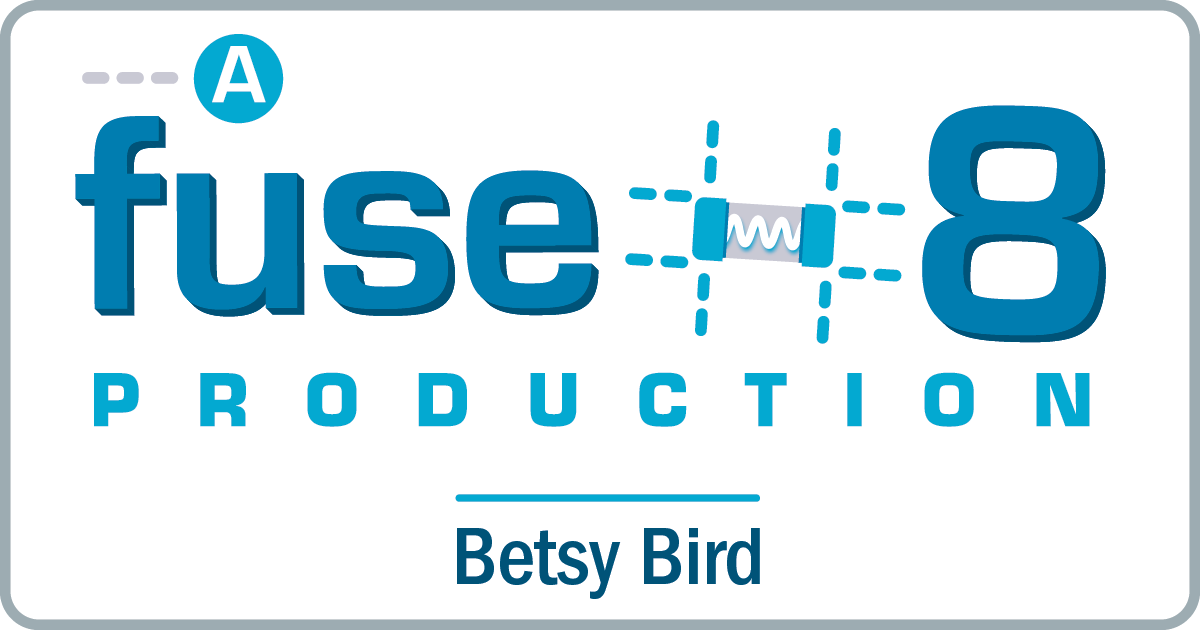

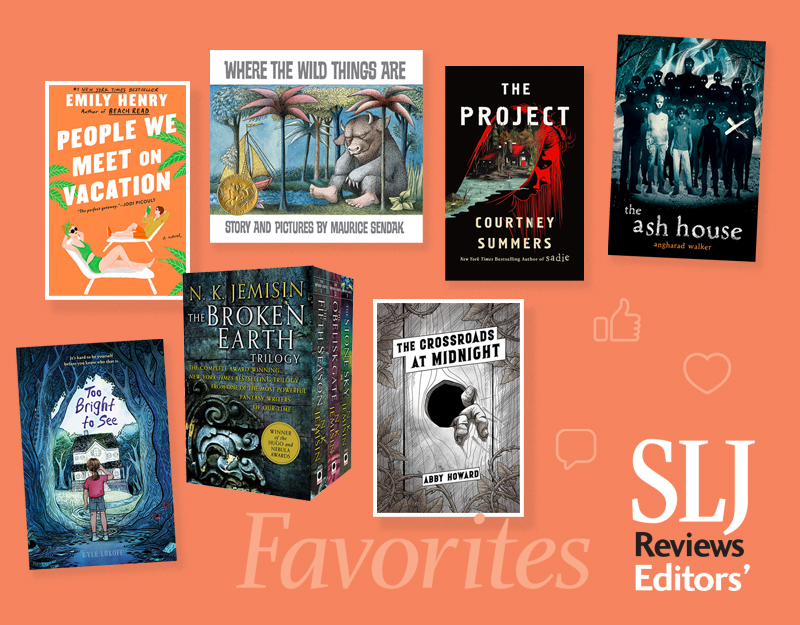
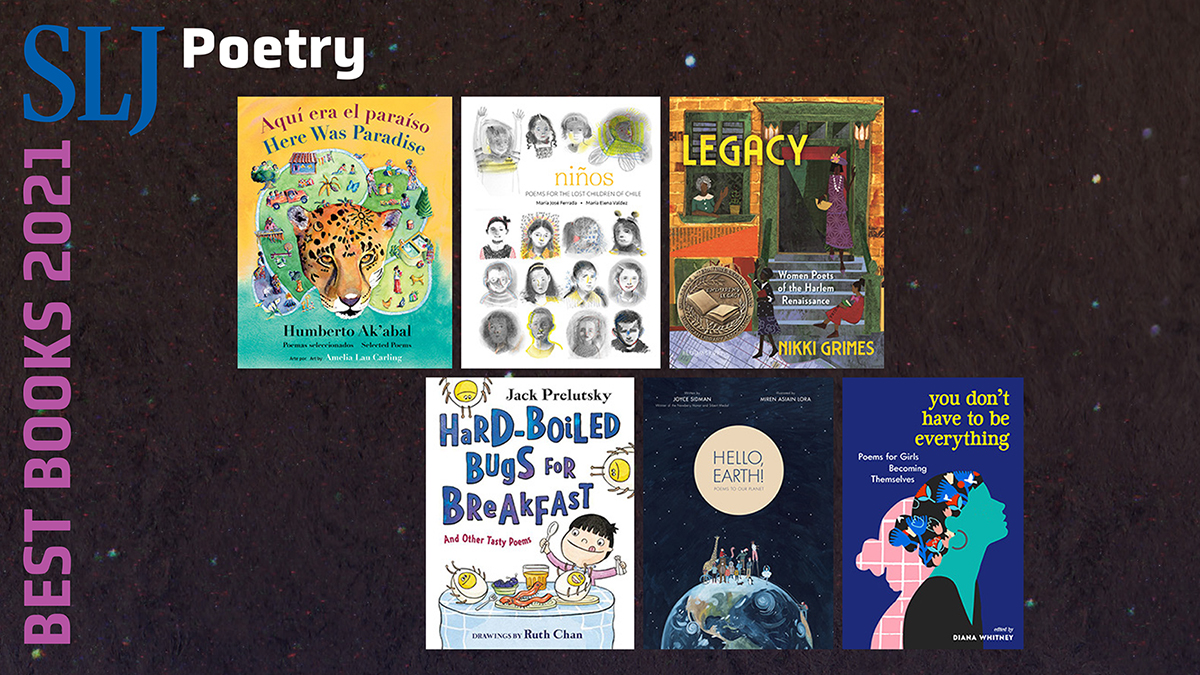
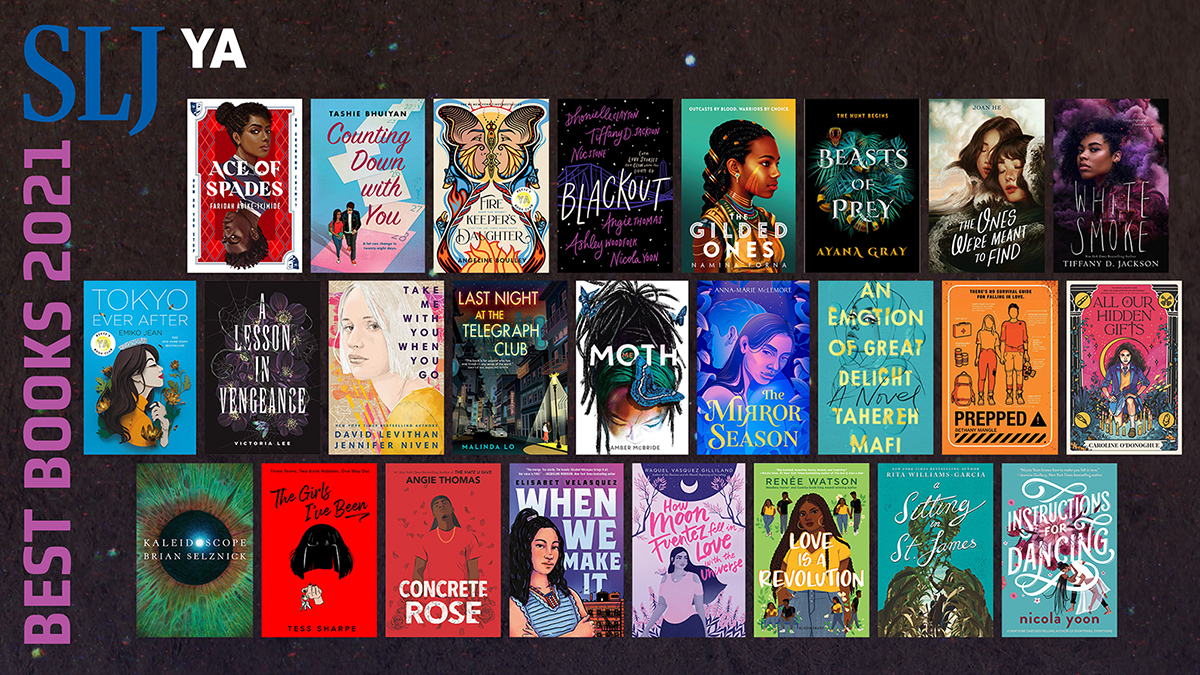
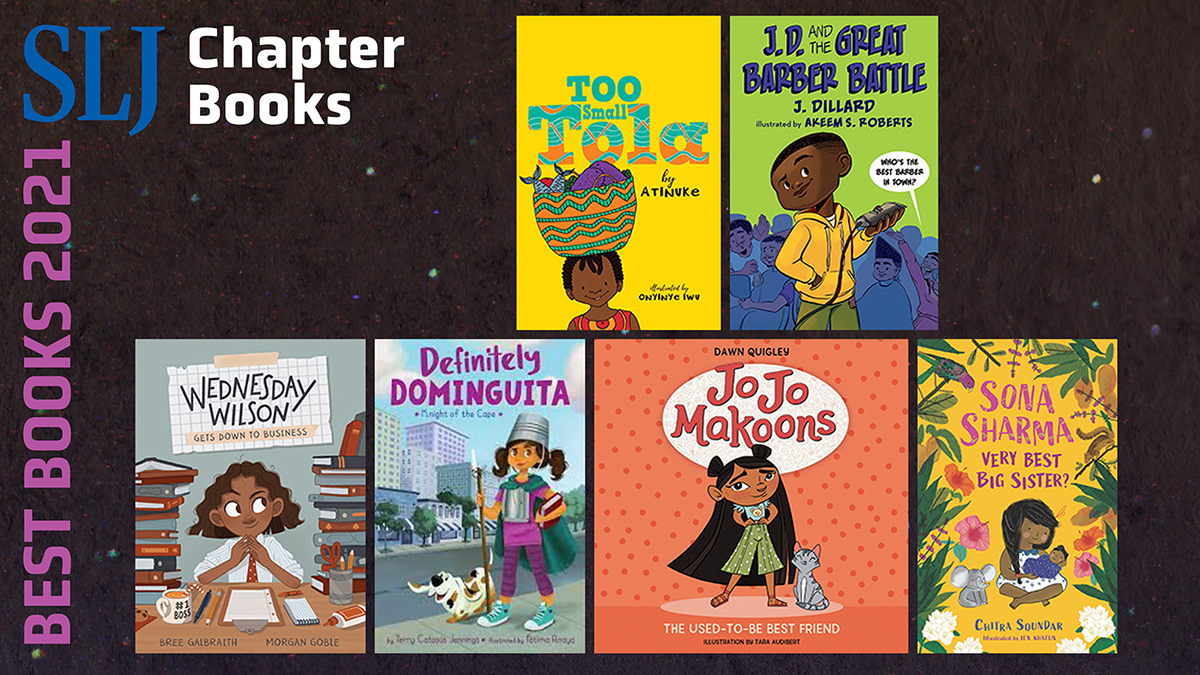
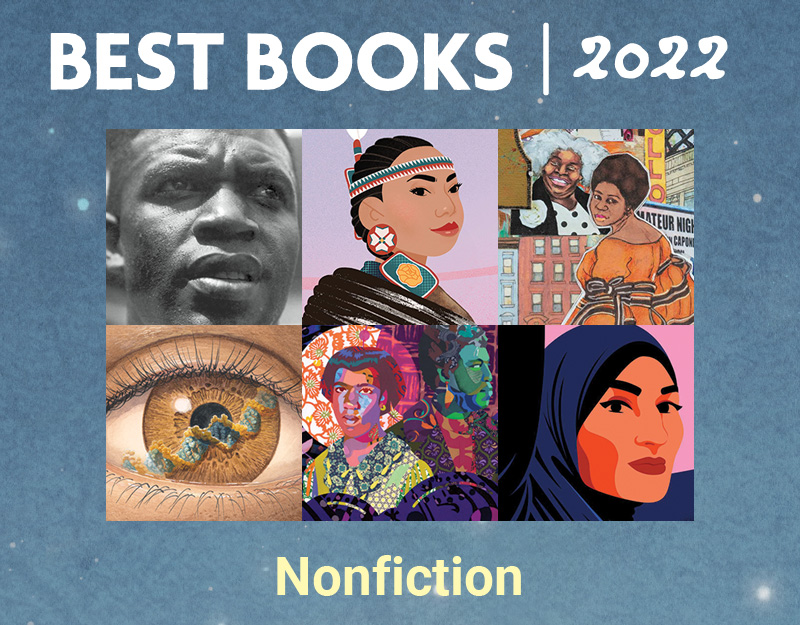
I took one look at the cover of All About Penises and my immediate reaction was to jump for joy as I thought “FINALLY!” You see, I am 78, recently began reading a book where the author states that the fourth quarter of life is the years 60 to 80. I bought this book in hope of finding good ideas to use when I ENTER this 4th quarter stage and I’m smacked in the face with the knowledge that, statistically speaking, I only have two years to go until I will hopefully move in to my BONUS years. I write this to emphasize how important it is from my perspective to see “things” finally happen before my time is up!
I could not be more pleased to know these two books are about to become available for parents and overwhelming believe children will greatly benefit from experiencing the content. Of course some adults will apply much energy and effort to ban them in anyway possible. I can’t imagine any book that would seem more inappropriate to them . . . . BUT my opinion was one of joy. IT’S MORE THAN ABOUT TIME!!! I cannot wait to savor the text and illustrations of each.
Boy, I LIKE your enthusiasm! And as someone who, by this definition, must be in my third quarter of life (don’t know if I’m ready for that one) I’m happy to see it as well. I tell ya, we’re in a golden age of children’s nonfiction over here.
Thanks for the reply, Betsy. I think we certainly appear to be in a golden age of POSSIBILITY. As difficult as circumstances appear to be at times, I recognize POTENTIAL to bring about change. From my perspective, we are in both “the best of times AND the worst of times” to quote another. Surely . . . we need to appreciate and celebrate the wonderful advancements in thinking these two books represent. I’m filled with HOPE.